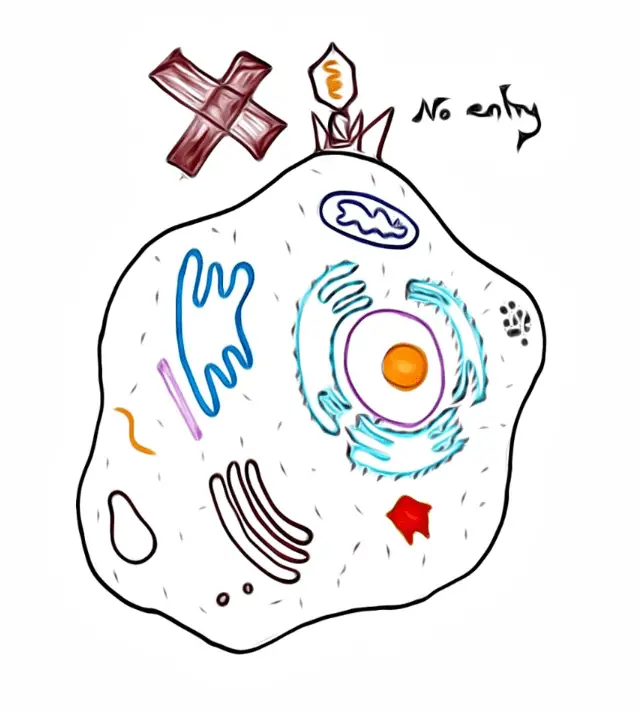Step into the mesmerizing world of the human microbiome, a bustling metropolis of microorganisms thriving both inside and outside our bodies. From the enigmatic skin to the mystical oral mucosa and the labyrinthine gastrointestinal tracts, this microscopic community forms a symphony of life, unique to each individual.
Imagine the skin, an entire universe on its own, hosting a vibrant ecosystem known as the skin microbiome. Within this bustling realm, a delicate balance is maintained by an astonishing array of organisms – strains of bacteria, viruses, and fungi, all harmoniously coexisting. This harmonious equilibrium is the key to healthy skin.
Yet, like any great cosmic drama, disturbances can arise, leading to skin diseases such as the notorious acne vulgaris. The villain behind this skin condition is none other than Cutibacterium acnes (C. acnes), a formidable gram-positive bacterium. In the intricate dance of the skin microbiome, certain strains of C. acnes rise to dominance during acne outbreaks, upsetting the cosmic harmony.
The Symphonic Tale of C. acnes
C. acnes, the unrivaled ruler of the human skin microbiome, comes in a multitude of strains. Some reign over the realm of healthy skin, while others join forces with acne, causing havoc. This dramatic shift in balance marks the onset of acne, a tale of microbial imbalance.
The Art of Acne Warfare
In the battle against acne, conventional weaponry like antibiotics has been wielded, but this approach comes at a cost. While antibiotics may target the troublemaking C. acnes strains, they also ravage the entire skin microbiome, leading to yet another unsettling disarray. It’s like wielding a sledgehammer to crack a nut.
A Brilliant Breakthrough
But fear not, for amidst the chaotic battlefield, a beacon of hope emerges. The Translational Synthetic Biology research group at Universitat Pompeu Fabra presents a revolutionary strategy – a surgical strike on acne-causing C. acnes strains without disrupting the delicate balance of the skin microbiome. Don’t miss out on one of our many captivating articles that explores the cutting-edge innovations in phage-based skincare.
Exploring the Fascinating World of Pufferfish: A Comprehensive Guide
The Elegance of Precision
Imagine a weapon so precise that it can selectively target only the troublesome strains, leaving the rest of the microbial community untouched. This is the promise of the new approach, a symphony of precision – eliminating the acne culprits while preserving the beauty of the skin microbiome.
The Quest for Radiant Skin
As we venture into this uncharted territory, the vision of acne-free, radiant skin becomes within our grasp. The interplay of science and nature, of symbiotic associations, opens doors to a new era in skincare, where harmony prevails, and the skin thrives in its full glory.
So let’s start this exciting voyage of exploration where science and beauty coexist and the skin microbiome unveils its captivating mysteries. The art of precision, a celebration of life on the skin’s cosmic canvas, rather than brutal force, holds the key to the future of skincare.
Phage therapy to manipulate the skin microbiome
The quest for flawless, acne-free skin has led scientists to explore groundbreaking avenues in microbiome research. Among the emerging strategies, one particularly fascinating approach involves enlisting the help of nature’s tiniest assassins – bacteriophages! These microscopic viruses hold the key to selectively targeting and eliminating acne-causing strains of bacteria within the skin microbiome, heralding a new era of phage therapy.
Unveiling the Skin’s Microbial Arsenal
The human skin is a vibrant ecosystem, teeming with a diverse array of microorganisms that form the skin microbiome. Amid this vast community, the troublesome bacterium C. acnes gained notoriety for its role in acne development. Recent discoveries have revealed that this sneaky skin dweller is no match for the cunning tactics of bacteriophages.
The Versatility of Phages
Phages are remarkable entities that can target specific strains of bacteria with surgical precision. Within the skin microbiome, they possess the ability to either infect a broad spectrum of bacterial strains or focus on a narrow subset. This potent capacity, known as phage therapy, has opened doors to a myriad of possibilities for managing acne and other skin conditions at their source.
Unraveling the Secrets of C. acnes Phages
Researchers have delved into the realm of C. acnes bacteriophages, unearthing a treasure trove of possibilities. One notable discovery is the multifaceted nature of these phages, exhibiting both lytic and lysogenic cycles. The lytic cycle, akin to a viral storm, can obliterate and dissolve host bacteria, while the more subtle lysogenic cycle can subtly impact host cells, both physiologically and genetically.
The Enigmatic PAD20
Among the C. acnes bacteriophages, PAD20 stands out as an enigmatic player. Previously indecipherable in its classification as lytic or lysogenic due to the absence of stable lysogens and integration-related genes, PAD20’s potential has now come to light. Scientists have scrutinized its ability to target various C. acnes strains and intriguingly linked its enhanced specificity to phage DNA methylation acquired through interactions with a methylation-competent strain.
Nature’s Own Genetic Shield
C. acnes strains within the skin microbiome have been revealed to be more cunning than expected. Some of these strains can introduce modifications to their own genome, creating a genetic shield against bacteriophage invasions. This natural defense mechanism confers immunity to certain strains, while others fall prey to the relentless onslaught of phages. Harnessing this knowledge, scientists have proposed an ingenious mechanism to selectively eradicate specific acne-related strains by engineering therapeutic phages that target only the non-modifying bacterial sub-populations.
Sculpting the Perfect Skin Microbiome
The promise of bacteriophage therapy is not just limited to eliminating acne-causing strains. Researchers have also discovered that it can play a transformative role in modulating the composition of C. acnes strains over time. This dynamic intervention leads to a reduction in acne-prone strains, while beneficial strains are preserved, paving the way for healthier, radiant skin.
A Future of Possibilities
As we delve deeper into the world of phage therapy, the potential to shape and engineer the infectivity range of C. acnes phages becomes increasingly evident. The power of epigenetic imprinting on phage DNA offers an exciting avenue to change the susceptibility and specificity of phages, unlocking the potential for developing custom-made phage cocktails to sculpt the perfect skin microbiome.
Armed with this newfound knowledge, the future of acne treatment appears brighter than ever, with tailored phage therapies on the horizon. Embracing these tiny assassins as allies, we march towards a future where flawless skin becomes an achievable reality for all. So, let us celebrate the potential of phages and their power to heal and rejuvenate our skin from within.



